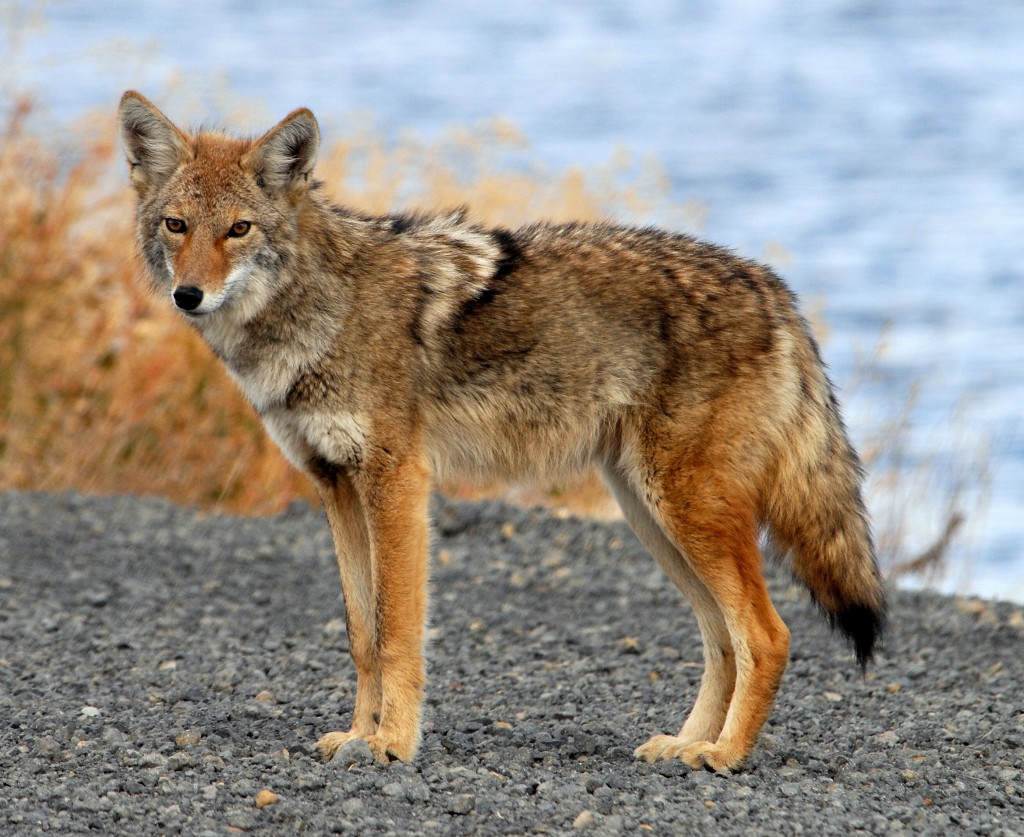Coyotes In and Around Peru
By John T. Ryan
Peru – Oftentimes the most interesting part of a Peru Town Board meeting comes up under “Other Business” when Counselor Brandy McDonald reports on what’s going on in and about town. At the Monday, February 13th meeting his subject was coyotes. McDonald reported that about seventy coyotes have been shot in the area and that a security camera photographed a coyote behind his Washington Street house. A coyote also reportedly snatched a small dog from one person’s backyard.
Not being a hunter and knowing very little about coyotes, this reporter decided to investigate. McDonald was correct! There is a significant coyote population in almost every part of New York State. About 30,000 New Yorkers participate in coyote hunting each year and about 3,000 participate in coyote trapping. While few people actually have a problem with coyotes, there are safety concerns especially regarding children, cats, small to medium-sized dogs and livestock.
Bert Owens of Plattsburgh is an experienced and very successful coyote hunter. He shot seventy-eight last year and forty-two so far this year. Last October he shot ten coyotes in the vicinity of the Mannix Road over a two-week period. Owens said he got interested in hunting coyote after witnessing several coyotes eating a doe not far from his hunting camp. Owens said, “We considered that doe off-limits. There’s a need for coyotes, but they have to be managed.” Owens thinks coyote numbers are down this year. Six or seven of the animals he shot have been infected with mange.
Wes Dermody of Peru characterizes himself as a lifetime, avid hunter. He described why he began coyote hunting. “What triggered me was something that happened a few years ago. I live on the River Road. It was early in the evening and my boys were outside playing. I was working in the garden. When I went back in the house I could hear snarling and growling outside. It was coming from about 100 feet away from my kids.” It wasn’t long before Dermody took up coyote hunting. He got permission to hunt on a nearby farm and has killed up to thirteen coyotes in a year.
Do coyotes have positive value? According to DEC, some people actually enjoy hearing coyotes’ evening “serenades.” Animals such as foxes, fishers, ravens and even golden eagles benefit from coyote-abandoned deer carcasses and farmers definitely appreciate reduced numbers of woodchucks.
Competition is an important part of many sporting activities and predator hunting is no exception. X-PLO Firearms and Ammunition Shop at 1080 Military Turnpike in Plattsburgh has been sponsoring a Predator Derby that ran from February 1 to today. Owner Ronda Barber said, “Our customers were asking for one. They’re popular in other parts of the state. Our derby also includes bobcat and fox. People make new friends and have a great time.”
Barber said the derby’s proceeds are given to the North Country Honor Flight and the Veterans Assistance Bureau. Last year $1,200 was contributed. As of this Wednesday, 75 entrants had taken over 70 coyotes, the largest weighing 52.4 pounds. Adult coyotes typically weigh 35 to 45 pounds, though the hunters say the coyotes this region are gradually increasing in size.
A DEC webpage offers several safety recommendations:
 Coyote Conflicts
Coyote Conflicts
The Eastern coyote is firmly established in New York. They live in New York as an integral part of our ecosystems. People and coyotes can usually coexist if the natural fear of people that coyotes have is maintained. Pets and young children are typically most at risk.
Below are steps you should take to reduce and prevent coyote problems from occurring.
• Do not feed coyotes and discourage others from doing so
• Unintentional food sources attract coyotes and other wildlife and increase risks to people and pets. To reduce risks:
◦ Do not feed pets outside.
◦ Make any garbage inaccessible to coyotes and other animals.
◦ Eliminate availability of bird seed. Concentrations of birds and rodents that come to feeders can attract coyotes. If you see a coyote near your bird feeder, clean up waste seed and spillage to remove the attractant.
• Do not allow coyotes to approach people or pets.
• Teach children to appreciate coyotes from a distance.
• If you see a coyote, be aggressive in your behavior – stand tall and hold arms out to look large. If a coyote lingers for too long, then make loud noises, wave your arms, throw sticks and stones.
• Do not allow pets to run free. Supervise all outdoor pets to keep them safe from coyotes and other wildlife, especially at sunset and at night.
• Regulated hunting and trapping increases the “fear” coyotes have towards people.
• Fencing your yard may deter coyotes. The fence should be tight to the ground, preferably extending six inches below ground level, and taller than 4 feet.
• Remove brush and tall grass from around your property to reduce protective cover for coyotes. Coyotes are typically secretive and like areas where they can hide.
• Contact your local police department and NYSDEC regional office for assistance if you notice that coyotes are exhibiting “bold” behaviors and have little or no fear of people.
• Ask your neighbors to follow these same steps.
Posted: February 26th, 2017 under Adirondack Region News, Agricultural News, Education News, Environmental News, General News, Northern NY News, Peru News, State Government News, Town Board News.

